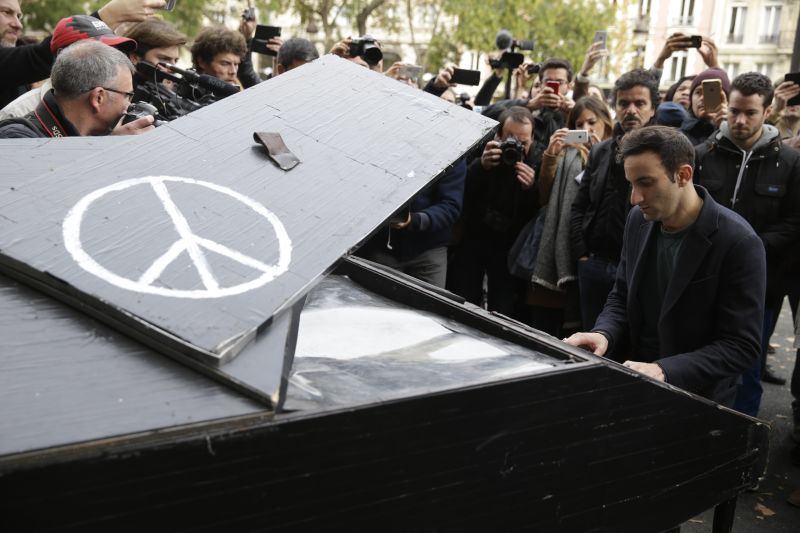On Friday, coordinated terrorist attacks struck the French capital, killing more than 120 people.
Deadly attacks hit multiple sites simultaneously. There were explosions outside a massive stadium. Scores of people were held hostage inside a concert venue. Diners at several cafes and restaurants faced volleys of gunfire.
The incident has prompted anger, grief and an outpouring of sympathy from around the world.
On social media, Facebook's check-in feature let people in Paris signal to their friends and family that they were safe. On Twitter, the hashtag #PortOueverte connected people stranded in Paris with nearby residents offering to host them.
And a day after the attacks, a few expressions of resilience and hope — in song and in art — have been shared tens of thousands of times.

9(MDAxOTAwOTE4MDEyMTkxMDAzNjczZDljZA004))